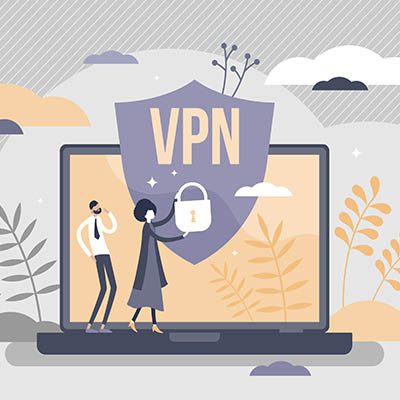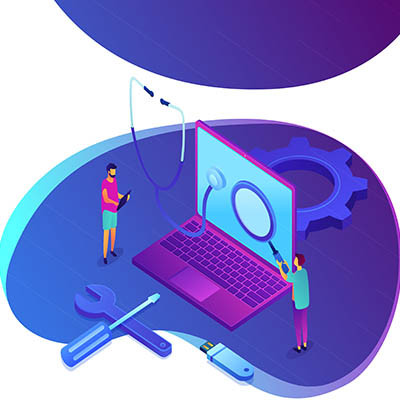NetWorthy Systems Blog
Remember the days of watching a loading bar slowly crawl across the screen? Or maybe that distinct screech of a dial-up modem connecting? While technology has rocketed forward since then, some businesses still cling to an outdated approach when it comes to managing their IT: the break-fix method.
This means waiting for something to go wrong—a server crash, a software glitch, a security breach—before calling for help. It might seem cost-effective initially, but this reactive stance is becoming increasingly risky and wasteful.
You might remember the good old days of software, and by “good old days,” we mean “good old days of tedium, installing software on computers one by one.”
Software as a Service, or SaaS for short, has put an end to those days and has made way for better options for SMBs. Today, we want to look into these subscription-based tools and showcase their benefits.
If given the opportunity, would you rather manage a room full of big, bulky servers to maintain an in-house data network, or would you prefer to decentralize your infrastructure to make it more accessible, redundant, and secure? A data center can help you do just that, and it’s not nearly as difficult or as complicated as you might think to utilize one.
Think about running a small or medium-sized business. It's like trying to juggle a million things at once. You're super focused on keeping your customers happy, making sure your team is doing well, and, of course, making money. Among all of that, there is something that often gets overlooked: the technology that makes all of your efforts possible.
Technology is the engine driving success in our community. From managing daily operations to engaging customers, reliable IT is no longer optional. Keeping that engine finely tuned—ensuring hardware, software, and networks are always up-to-date—presents a significant challenge. Technology evolves at lightning speeds, and managing it can feel like a constant, resource-draining battle, pulling you away from focusing on your core business.
Is your current IT setup empowering your growth, or is it quietly creating risks that could derail your progress? Many businesses operate with technology that feels "good enough," unaware of the hidden dangers lurking beneath the surface.
VoIP, or Voice over Internet Protocol, is great. It can be a pivotal tool to help you transform your business’ communications infrastructure, provided you implement it with intention. Today, we want to share three of the biggest benefits your business can expect to enjoy from switching to a VoIP solution.
An expiration date helps to make sure you aren’t buying fast-turning foods at the grocery store, and now, the technology industry is making strides to establish a similar standard. A new industry report recommends new legislation pushing for End-of-Life (EoL) disclosure, which would, in theory, allow businesses and consumers alike to make more informed purchasing decisions. What does this mean for your business?
The entire purpose of modern IT is to improve the processes that work requires us to do. Today, we wanted to address a few business priorities—productivity, cybersecurity, and accessibility—that the right tech can help you accomplish, explicitly exploring how different tools can contribute to your success.
Technology is the cornerstone of most modern business operations, making supporting this technology more important than ever. That’s one reason we’re so proud to provide IT assistance to our fellow businesses.
As we’ve done so, however, we’ve noted that some assistance is required more often than other forms of support. Let’s go over what some of these usual suspects are, and why it is so helpful to have someone (ideally, us) assisting you in managing them.
One of the biggest things that businesses need to consider today, from an IT front, is how artificial intelligence fits in. One way many companies are integrating AI into their businesses is through chatbot technology. Today, we will tell you everything you need to know to get started with chatbot technology.
Running a small business comes with many challenges: managing customers, handling inquiries, scheduling appointments, and marketing your services, just to name a few. While these tasks are mandatory for the creation of a successful business, they can also be extraordinarily time-consuming. That’s where chatbots come in.
When was the last time that you took a hard look at your business’ technology? How old are some of the devices that you rely on each day? These are critical questions to answer if you want your business to succeed. Let’s discuss why upgrading is so important, and how to determine when the time to upgrade comes.
Authentication has been a major talking point for the past few years, particularly as the value of data has only increased and security has correspondingly increased in importance. As a result, more secure and reliable means of identity verification have also become more critical. Now, voice authentication is being considered as such a means.
A virtual private network, or VPN, is a critical part of keeping your business safe while operations are taking place out of the office, but a discussion needs to be had about what a VPN can do and what a VPN cannot do. This is especially important to know for keeping your company safe, so without further ado, let’s dive in.
With more businesses moving in the direction of remote connections and mobile devices, it’s no surprise that wireless Internet is such a pain point for organizations. Sometimes it can be an exercise in frustration to connect to your office’s wireless network, and you might not really know what to do about it. Here are some ideas to try and increase your wireless network’s strength or signal.
As time has passed, more focus has been put on balancing a user’s identity authentication in terms of its convenience versus its security. This is what has led to the development of solutions like Windows Hello, the biometrics-based system that Microsoft has introduced into the Windows operating system.
Cybersecurity is a massively important consideration for today’s businesses, and as a result, managing it is often given a considerable amount of time. However, recent developments suggest that this time can potentially be reduced by the use of “self-healing” security software. We know that this sounds a little out there, but stay with us! We’ll explain.
With productivity being a massively important metric for every business, situations like the ongoing COVID-19 pandemic create a lot of fear and uncertainty; especially with businesses having to find new ways to go about doing things so that they can keep revenue coming in. This week, we thought we’d take a minute to look into how businesses have made it this far and how each element of a business has had to react to the ongoing crisis.
Many companies have been in business for so long that they still utilize legacy applications for specific purposes within their computing infrastructure. There simply might not be a better option at the time, so they continue to rely on software that is, quite frankly, showing its age, including the server software that runs their business. Virtual machines offer these organizations the opportunity to still leverage these applications without the inherent risk that comes from using unsupported software.




















